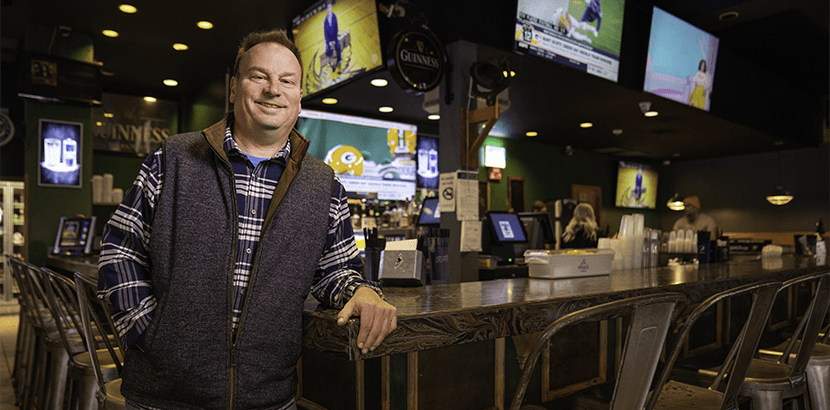A Heart Saved
- Author: Matt Kovacik
- Date Submitted: Jan 10, 2023
- Category: Cardiology


“ Quick thinking and care helped Matt beat the 'widow-maker'”
One Thursday afternoon in August 2022, Matt Kovacik was about to leave home for work at his family’s Slippery Rock bar and restaurant. As he walked to his car, painful indigestion set in— or so he thought. But as the pain in his chest worsened—and Matt became sweaty and dizzy—his wife, Nichole, suspected something worse than heartburn. “I tried to walk it off, but then it got really bad,” Matt says. “I started to sweat worse than with any workout I’ve ever had in my life.” When he vomited forcefully, Nichole told Matt to “get in the car right now.” As she prepared to drive Matt to the emergency room, she called Matt’s sister, a neurologist at Excela Health, and described his symptoms. Matt’s sister confirmed Nichole’s fears and told them he needed an ambulance immediately. (Incidentally, Butler Health System and Excela Health have entered into a definitive agreement to merge into a new health system that will serve western Pennsylvania.) Nichole drove Matt to a nearby fire hall, from which an ambulance rushed him to Butler Memorial Hospital.
‘I’m going to be OK’
At the BMH emergency room, Matt was surrounded by doctors and nurses. Within five minutes, they took him to the cardiac catheterization laboratory, or cath lab. “I said, ‘What’s going on?’” Matt recalls. “They said, ‘You’re having a heart attack.’” That’s when Matt met interventional cardiologist Varun Avula, DO. Dr. Avula told Matt he needed a coronary angioplasty procedure. “I remember looking at him and thinking, I’m going to be OK,” Matt says. “I could tell he was confident.” Matt had an often-lethal type of heart attack dubbed the “widow maker.” It occurs when the left anterior descending (LAD) artery is blocked, cutting off circulation to a large area of the heart . As is true for any heart attack, it is critical to restore that blood supply before the heart muscle sustains permanent damage. “This is one of the more severe heart attacks because it affects a very large territory of the heart—that main pumping chamber,” Dr. Avula explains. “It makes the heart more susceptible to mechanical complications. You can go into a fatal arrhythmia (abnormal heart rhythm).” In the cath lab, Dr. Avula placed a catheter (a thin, flexible tube) into a blood vessel in Matt’s wrist and threaded it to his heart. He then injected dye into Matt’s coronary arteries and used imaging equipment to find the blockage. To open Matt’s LAD artery—which was 100% blocked—Dr. Avula inflated a balloon inside it. He then inserted a stent to prop open the artery. Unfortunately, many people who have a blocked LAD artery don’t make it to a hospital in time to receive emergency treatment. Thanks to Matt’s loved ones and the ambulance crew and the staff at Butler, Dr. Avula and his team opened Matt’s blocked artery in less than 90 minutes—a national goal for heart attack care. “At five minutes till 5 p.m., I was walking to my car having heart attack symptoms, and at 6:30 p.m., I was already in my hospital room recovering,” Matt says. “Is that amazing or what?”
On to recovery
Matt went home two days after his heart attack and did something every heart attack survivor should consider doing: He enrolled in cardiac rehabilitation at Butler. For several weeks, Matt participated in medically supervised exercise, received heart-healthy education and bonded with other heart attack survivors. “I feel fantastic,” he says. Since his ordeal, the 56-year-old father of four sees a cardiologist regularly and has committed to a healthy lifestyle. “The biggest change I’ve made is my mindset with stress,” he says. Looking back, Matt knows he’s lucky to be alive. “Butler is only 15 minutes from me, but I had no idea of the facility and the staff they have there for cardiac care,” Matt says. “I was amazed.”
